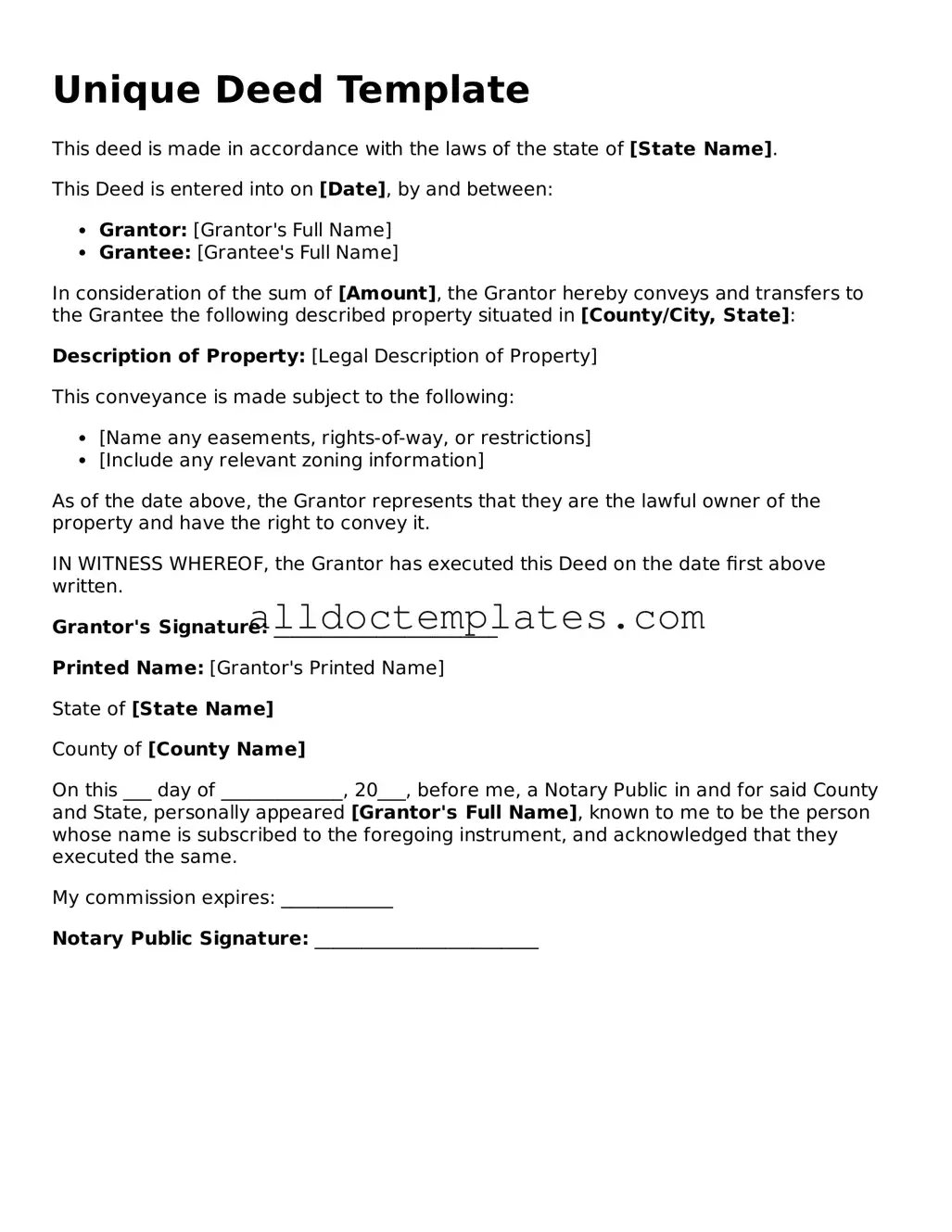Unique Deed Template
This deed is made in accordance with the laws of the state of [State Name].
This Deed is entered into on [Date], by and between:
- Grantor: [Grantor's Full Name]
- Grantee: [Grantee's Full Name]
In consideration of the sum of [Amount], the Grantor hereby conveys and transfers to the Grantee the following described property situated in [County/City, State]:
Description of Property: [Legal Description of Property]
This conveyance is made subject to the following:
- [Name any easements, rights-of-way, or restrictions]
- [Include any relevant zoning information]
As of the date above, the Grantor represents that they are the lawful owner of the property and have the right to convey it.
IN WITNESS WHEREOF, the Grantor has executed this Deed on the date first above written.
Grantor's Signature: ________________________
Printed Name: [Grantor's Printed Name]
State of [State Name]
County of [County Name]
On this ___ day of _____________, 20___, before me, a Notary Public in and for said County and State, personally appeared [Grantor's Full Name], known to me to be the person whose name is subscribed to the foregoing instrument, and acknowledged that they executed the same.
My commission expires: ____________
Notary Public Signature: ________________________
